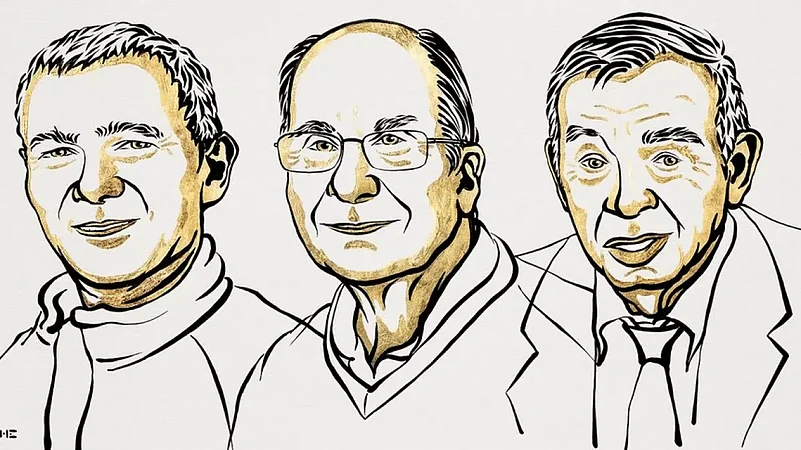Three scientists won the Nobel Prize in chemistry for their work on quantum dots — tiny particles that can release very bright coloured light and are used in electronics and medical imaging.
Moungi Bawendi, of MIT; Louis Brus, of Columbia University, and Alexei Ekimov, of Nanocrystals Technology Inc., were honoured for their work with the particles, just a few atoms in diameter, and that “have unique properties and now spread their light from television screens and LED lamps,” according to the Royal Swedish Academy of Sciences, which announced the award in Stockholm.
“They catalyze chemical reactions and their clear light can illuminate tumour tissue for a surgeon,” the academy said.
Quantum dots' electrons have constrained movement, and this affects how they absorb and release visible light, allowing for very bright colours.
In a highly unusual leak, Swedish media reported the names of the winners before the prize was announced.
“There was a press release sent out for still unknown reasons. We have been very active this morning to find out exactly what happened,” Hans Ellegren, the secretary-general of the academy, told the news conference where the award was announced. “This is very unfortunate, we do regret what happened.”
The academy, which awards the physics, chemistry and economics prizes, asks for nominations a year in advance from thousands of university professors and other scholars around the world.
A committee for each prize then discusses candidates in a series of meetings throughout the year. At the end of the process, the committee presents one or more proposals to the full academy for a vote. The deliberations, including the names of nominees other than the winners, are kept confidential for 50 years.
Ekimov, 78, and Brus, 80, are early pioneers of the technology, while Bawendi, 62, is credited with revolutionizing the production of quantum dots “resulting in almost perfect particles. This high quality was necessary for them to be utilized in applications,” the academy said.
Bawendi told the news conference that he was “very surprised, sleepy, shocked, unexpected and very honoured.”
“The community realized the implications in the mid 90s, that there could potentially be some real world applications,” Bawendi said.
Asked about the leak, he said he didn't know about the prize until he was called by the academy.
On Tuesday, the physics prize went to French-Swedish physicist Anne L'Huillier, French scientist Pierre Agostini and Hungarian-born Ferenc Krausz for producing the first split-second glimpse into the superfast world of spinning electrons.
On Monday, Hungarian-American Katalin Karikó and American Drew Weissman won the Nobel Prize in medicine for discoveries that enabled the creation of mRNA vaccines against COVID-19.
The chemistry prize means Nobel season has reached its halfway stage. The prizes in literature, peace and economics follow, with one announcement every weekday until October 9.
The Nobel Foundation raised the prize money by 10 per cent this year to 11 million kronor (about USD 1 million). In addition to the money, winners receive an 18-carat gold medal and diploma when they collect their Nobel Prizes at the award ceremonies in December.





















